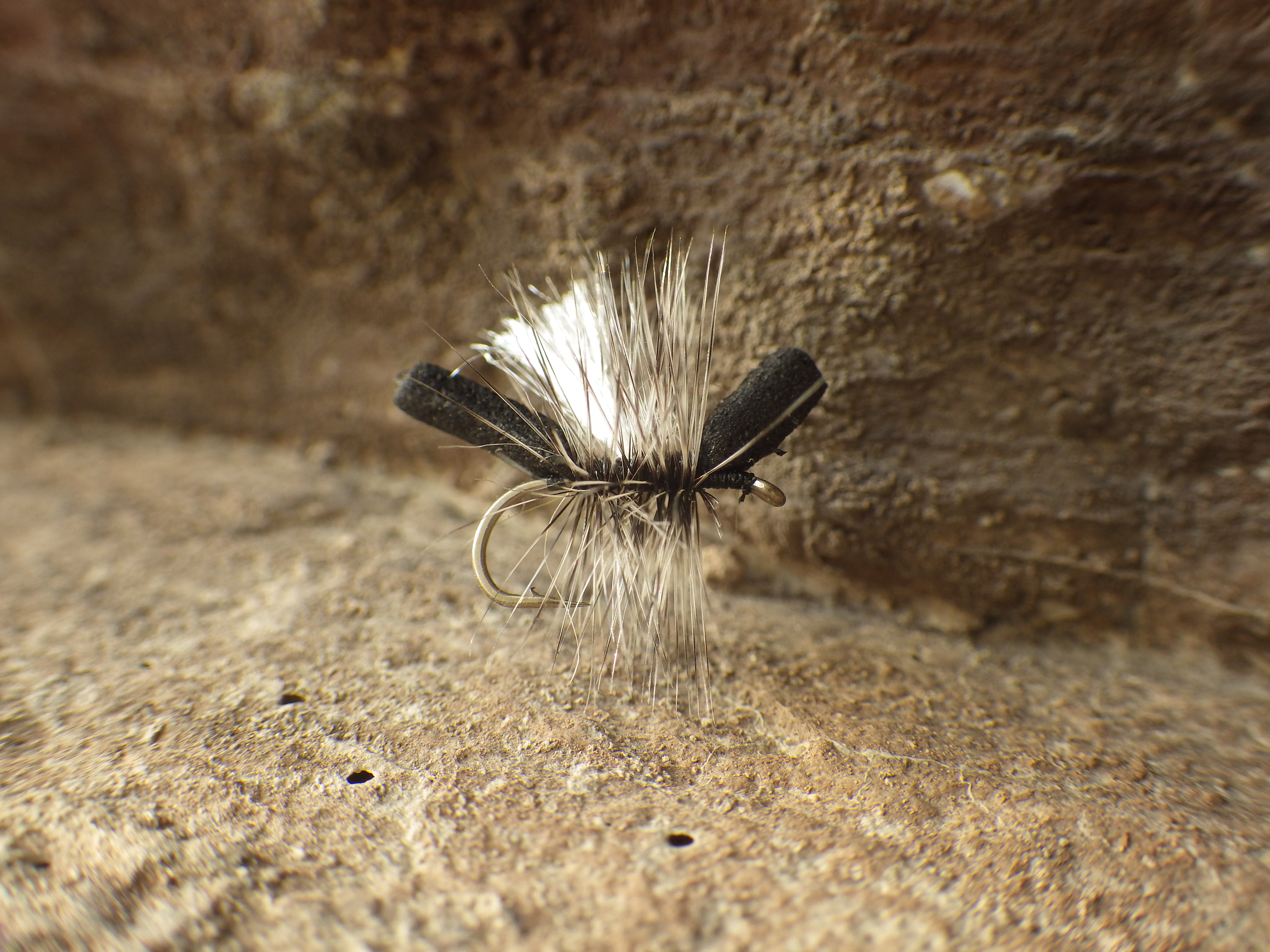
It may seem odd to think of midges as robust attractor patterns, but believe me it’s definitely worthwhile tying this delicate insect as an attractor. I realized this in early spring of 2010 on an afternoon when there were millions of midges hatching and drifting down a riffle and into a nice deep run. There were some big browns sipping in the slack water and I caught a few using a size18 Parachute Midge, but to my amazement most of the action was in the shallower riffle at the head of the run. I noticed not only snouts poking up, but violent splashes to large clusters of midges. I tied on a size 14 foam pattern I call the Buster Midge and cast to the head of the riffle. I watched as a snout appeared and inhaled the fly. After three or four jumps and a couple of charges I landed a 22 1/2 inch brown.
Click through for full recipe and tying instructions…
The Buster Midge is the easiest of the four attractors to tie. First get a small strip of black foam, taper it on both ends and tie it down hard in the centre of the hook. Next, take either white Antron or Widow’s Web and tie it upright on the centre of the hook shank. Last, take some good quality grizzly hackle and make several wraps in and around the Antron wing. One optional step I take is trimming the hackle on the bottom of the fly if I plan to fish this pattern in less turbulent water.
Hook: Dry-fly hook, #12-16
Body: Black foam
Hackle: Grizzly
Wing: White Antron
Tail: Black Antron
Pattern and Article from regular fly tying contributor, Jeremy Davies.
Excerpt from Volume 13, Issue 2.

